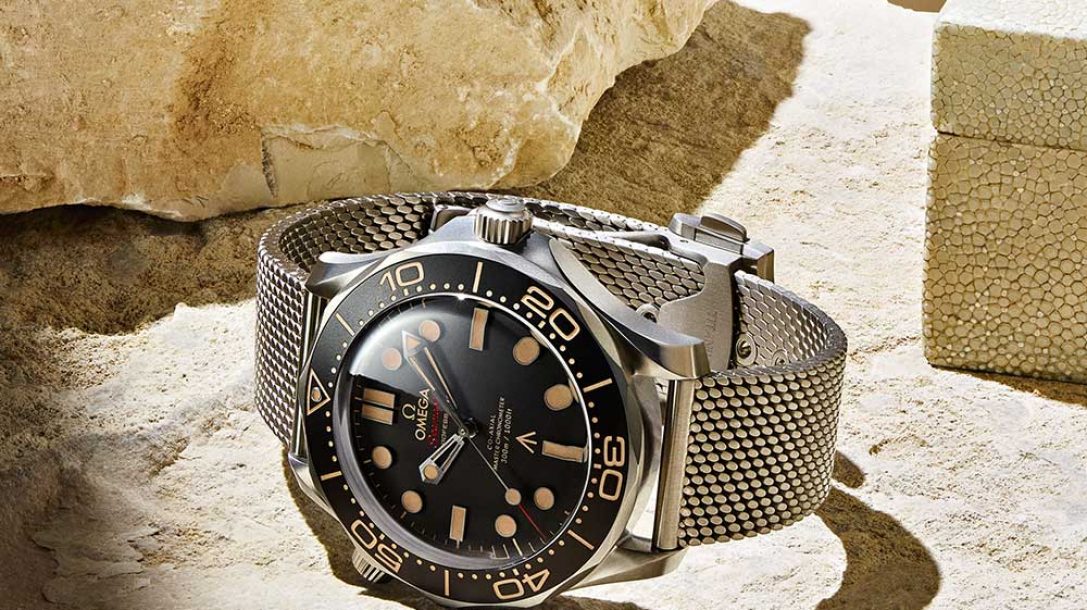At the helm of his one-design racing vessel during the most recent SailGP championship, Sir Ben Ainslie ripped through the waves with a one-of-a-kind watch on his wrist, a Yacht-Master 42. What makes it so unique? This timepiece boasts a case crafted in titanium. Even though at Rolex, no references exist to date in the catalogue fashioned in this metal, everything suggests that this first attempt will turn into a masterstroke before too long. Other brands have been delighting in the host of properties this material boasts for several years now.
Flashback! In 1791, the British mineralogist and pastor William Gregor (1761-1817) identified a new metal. Four years later, a Berlin-based university chemistry professor Martin Heinrich Klaproth (1743-1817), made the same discovery and drew on Greek mythology, the Titans, to give it a name. The hunch was perfectly right, yet its principal properties only became known in 1825. In 1939, the Luxembourg metallurgist, William Justin Kroll (1889-1973) finalized an industrial process to produce pure titanium. Although all this metal’s assets enthralled the aerospace industry when it was booming in the 1950s, on the watchmaking stage the world had to wait until 1970 to admire the first-ever piece featuring a titanium case, the X-8 chronometer created by Citizen. Eight years on and Porsche Design, then owner of IWC, centre staged a model combining a case and a bracelet designed in this material. The mid 2010s would mark the beginning of a new era. Numerous brands chose to enhance their creative collections with this metal and all flaunted the same characteristics: lightness, corrosion resistance, biocompatibility, etc.
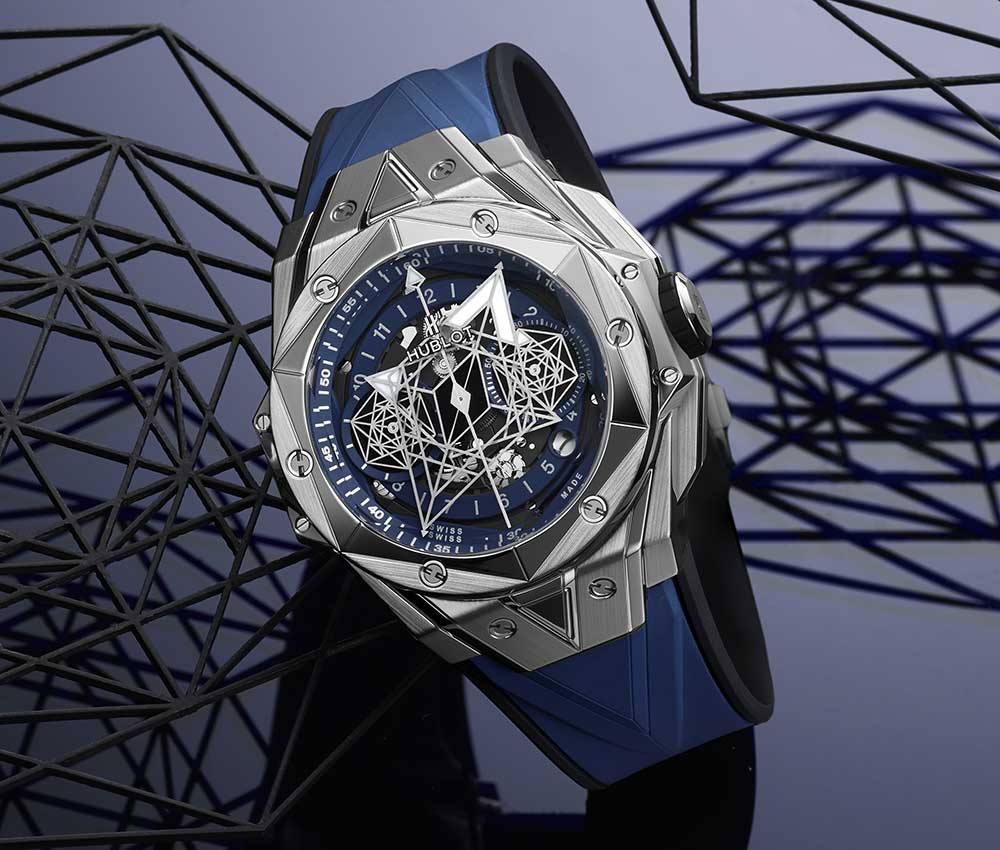 As such, these advantages can be found in the case of the Seamaster Diver 300M Co-Axial Master Chronometer 42 mm worn by Daniel Craig in the most recent James Bond opus in cinemas, No Time to Die. Omega’s timepiece is complemented by a Milanese mesh bracelet also made in grade 2 titanium. This titanium is the purest variation of the metal and the one most appreciated for its ability to be subjected to plastic deformation without breaking. Moreover, its satin-brushed finish that’s inherent to the alloy limits reflections of light. And, as with the Bienne watchmaker, titanium is frequently chosen elsewhere for sport-related productions. At Rebellion, the ties with the world of motor racing mean that most of the firm’s watches are imagined in titanium with or without DLC coating. ZRC, on the other hand, with its GF3000, proposes the only diver without a helium escape valve capable of mingling with the abyss. It has been tested to depths of 5,100 m below sea level!
As such, these advantages can be found in the case of the Seamaster Diver 300M Co-Axial Master Chronometer 42 mm worn by Daniel Craig in the most recent James Bond opus in cinemas, No Time to Die. Omega’s timepiece is complemented by a Milanese mesh bracelet also made in grade 2 titanium. This titanium is the purest variation of the metal and the one most appreciated for its ability to be subjected to plastic deformation without breaking. Moreover, its satin-brushed finish that’s inherent to the alloy limits reflections of light. And, as with the Bienne watchmaker, titanium is frequently chosen elsewhere for sport-related productions. At Rebellion, the ties with the world of motor racing mean that most of the firm’s watches are imagined in titanium with or without DLC coating. ZRC, on the other hand, with its GF3000, proposes the only diver without a helium escape valve capable of mingling with the abyss. It has been tested to depths of 5,100 m below sea level!
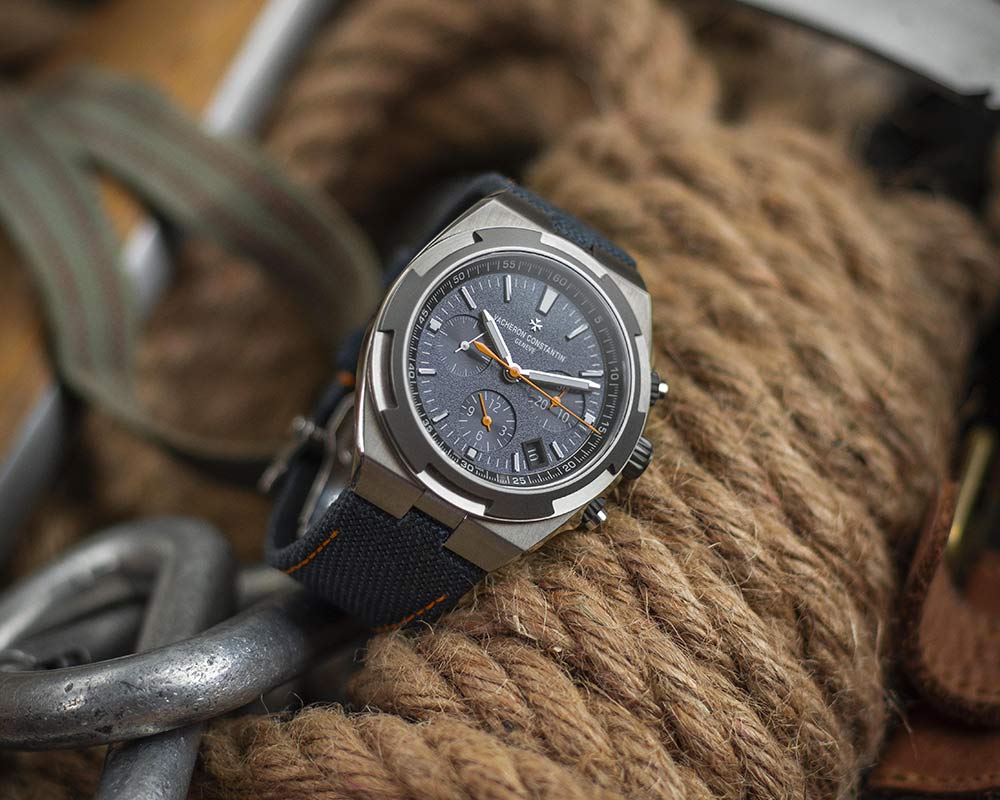 The metal’s state-of-the-art hue is taken as a design cue on certain pieces like Chopard’s Alpine Eagle Cadence 8HF, which is high-performing, generously-graphic and ever-so elegant. Vacheron Constantin marries it with steel in its Overseas Everest limited edition. This mix places the spotlight on a technical and decorative alternative. Hublot carves it on its Big Blanc Sang Bleu II Titanium and infuses it with colour on its Big Bang DJ Snake. A world-first! Up until now, only grey and its myriad of shades were available.
The metal’s state-of-the-art hue is taken as a design cue on certain pieces like Chopard’s Alpine Eagle Cadence 8HF, which is high-performing, generously-graphic and ever-so elegant. Vacheron Constantin marries it with steel in its Overseas Everest limited edition. This mix places the spotlight on a technical and decorative alternative. Hublot carves it on its Big Blanc Sang Bleu II Titanium and infuses it with colour on its Big Bang DJ Snake. A world-first! Up until now, only grey and its myriad of shades were available.
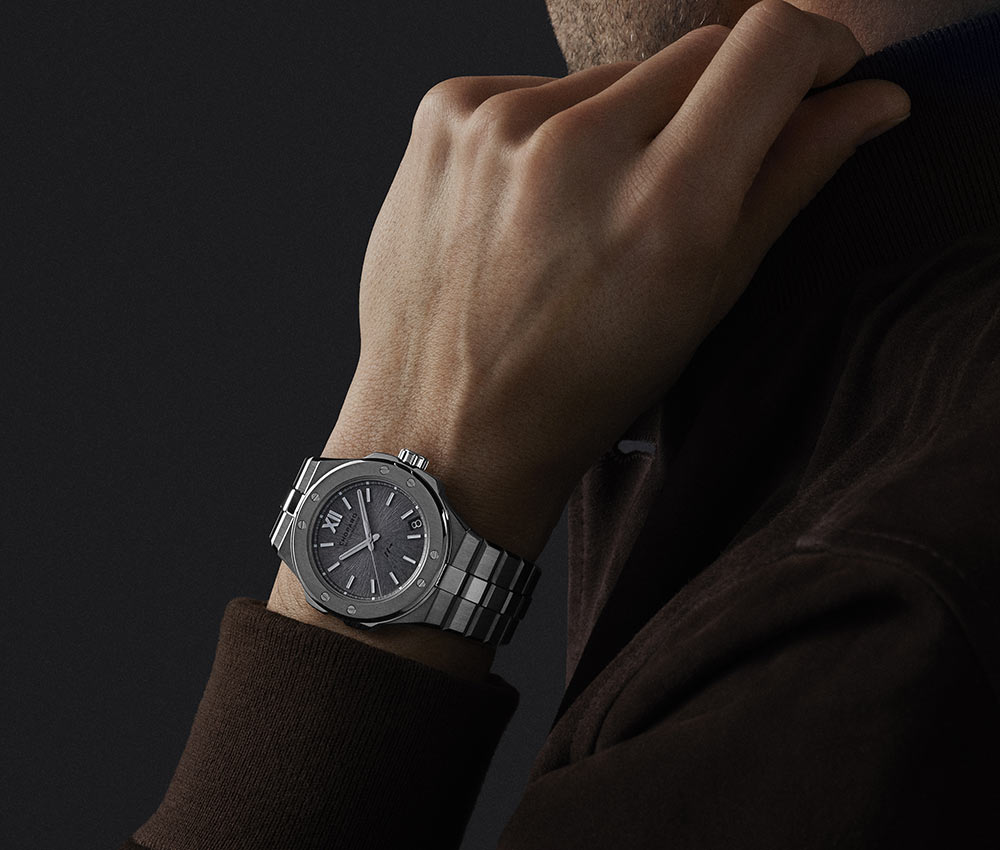 A handful of creations make use of a Titalyt treatment. In addition to gifting the metal with a stylistic touch, this oxidation process boosts its hardness, its resistance to wear and corrosion in line with the AMS 2488D standards for materials applied in motor racing and aerospace sectors. As such, Richard Mille’s RM 016 embraces a contemporary, elegant matt slate tone. The watchmaker from Les Breuleux goes a lot further than simply producing titanium cases. It makes use of the metal in its grade 5 version for the bridges and discs of its calibres such as its RMAC3, which powers the RM 11-03, as well as its skeletonized RMA7S movement nestling in its RM 029 Automatic Le Mans Classic. The presence of aluminium (6%) heightens resistance even more, whilst the inclusion of vanadium (4%) improves ductility, i.e. its ability to be stretched without breaking.
A handful of creations make use of a Titalyt treatment. In addition to gifting the metal with a stylistic touch, this oxidation process boosts its hardness, its resistance to wear and corrosion in line with the AMS 2488D standards for materials applied in motor racing and aerospace sectors. As such, Richard Mille’s RM 016 embraces a contemporary, elegant matt slate tone. The watchmaker from Les Breuleux goes a lot further than simply producing titanium cases. It makes use of the metal in its grade 5 version for the bridges and discs of its calibres such as its RMAC3, which powers the RM 11-03, as well as its skeletonized RMA7S movement nestling in its RM 029 Automatic Le Mans Classic. The presence of aluminium (6%) heightens resistance even more, whilst the inclusion of vanadium (4%) improves ductility, i.e. its ability to be stretched without breaking.
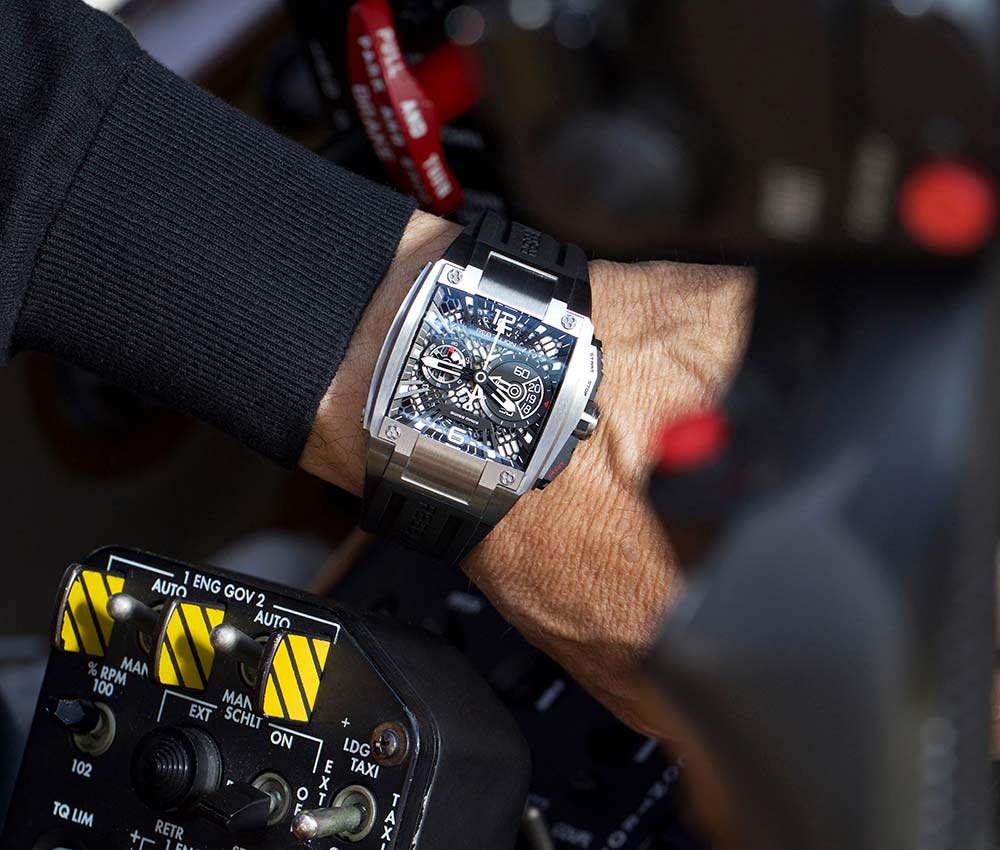 The metal also places the accent on sustainable development. It’s the ninth most abundant element in the Earth’s crust and even though it’s not scarce, it remains expensive as it’s difficult to refine. Given that it’s six times more costly to produce than steel, it would seem obvious that virtuous circuits are a must. Eco Titanium, produced from the reprocessing of aviation industry parts, offers a realm of opportunities to the watchmaking world. With its Submersible eLAB-ID limited series, assembled using 98.6% of recycled materials including Eco Titanium for the case, Panerai has inaugurated a brand new era that intends to curtail the use of our planet’s resources. A project that’s undeniably titanic.
The metal also places the accent on sustainable development. It’s the ninth most abundant element in the Earth’s crust and even though it’s not scarce, it remains expensive as it’s difficult to refine. Given that it’s six times more costly to produce than steel, it would seem obvious that virtuous circuits are a must. Eco Titanium, produced from the reprocessing of aviation industry parts, offers a realm of opportunities to the watchmaking world. With its Submersible eLAB-ID limited series, assembled using 98.6% of recycled materials including Eco Titanium for the case, Panerai has inaugurated a brand new era that intends to curtail the use of our planet’s resources. A project that’s undeniably titanic.
By Dan Diaconu
